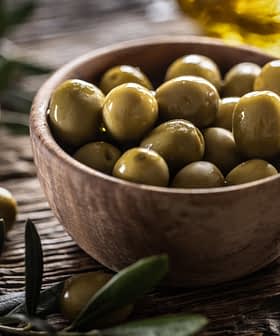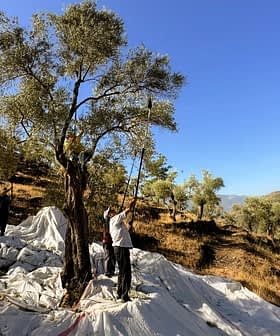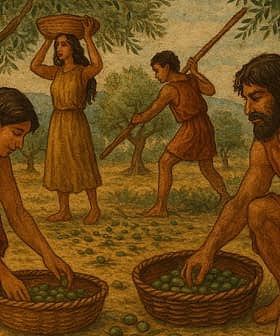Millenary Olive Tree Destroyed in Sardinian Wildfires
A wildfire in Santu Lussurgiu, Sardinia, spread through 14 municipalities, devastating olive groves and forcing the evacuation of almost 1,500 people before being extinguished by a large deployment of forces. The fire destroyed about 20,000 hectares of land, including the thousand-year-old monumental wild olive tree of Sa Tanca Manna, and efforts are being made to restore the ecosystem balance and prevent future disasters through fire prevention plans and agricultural practices.
On July 24, a wildfire broke out in the village of Santu Lussurgiu, in the western Sardinian province of Oristano.
For three days, the flames, driven by a strong Scirocco wind (blowing from the southeast), spread through a vast zone in the central-western part of the island. The blaze reached the area of Montiferru and Planargia, enveloping 14 municipalities and damaging olive groves across two regions.
If it were possible to summarize the catastrophe that affected this territory, I think it could be well represented by the martyrdom of the olive tree of Sa Tanca Manna.
The fire has been put out thanks to a large deployment of forces: 7,500 members of the forestry corps, firefighters, civil protection, Carabinieri, state police, the Italian Red Cross, the regional agency Forestas and volunteers were supported by a fleet of 24 aircraft, including 13 helicopters and 11 Canadair.

The valley of olive trees in Cuglieri before the fire. Photo: Maria Giovanna Campus
About 20,000 hectares of land including houses, farms and woods were devastated by fire. While an incalculable wealth of wildlife, livestock, Mediterranean bush and cultivated fields went up in smoke, almost 1,500 people were temporarily evacuated.
See Also:Olive Oil One Factor in Extraordinary Longevity of Some Sardinian ResidentsThe Oristano prosecutor opened a case against unknown persons for aggravated arson.
“In the municipality of Cuglieri, at least 90 percent of the olive groves has been destroyed,” the Council of the National Order of Agronomists and Doctors of Forestry (Conaf) said in a press release: “In the Municipality of Sennariolo, 95 percents of the surfaces are burnt.”
Among the many plants affected is the thousand-year-old monumental wild olive tree (Olea europaea oleaster) of Sa Tanca Manna, an area near Cuglieri. Registered in the list of monumental trees of the Ministery of Agriculture, before the disaster it was 16.5 meters tall and had a circumference of 10 meters.

Olive tree of Sa Tanca Manna before the fire. Photo: Barbara Alfei
“If it were possible to summarize the catastrophe that affected this territory, I think it could be well represented by the martyrdom of the olive tree of Sa Tanca Manna,” Maria Giovanna Campus, an archaeologist and former coordinator of the regional landscape protection office, told Olive Oil Times.
“We had recognized its value and beauty declaring it a natural monument and, therefore, we worked for its valorization and proudly signaled its presence to the numerous visitors. Sadly, it ended up in smoke and ashes,” she added.
It will take several decades to restore the conditions and fertility of the soil and to recover the ecosystem balance and the complexity of the Mediterranean scrub, according to Conaf.
“Fire prevention plans coordinated with the correct territorial planning of Mediterranean scrub wooded areas are urgently needed,” said Sabrina Diamanti, the organization’s president. “It is necessary to encourage the protection of the territory and discourage the abandonment of the forest, reminding farmers of their role as sentinels, allowing them to carry out rural and livestock activities peacefully, including grazing in the woods.”

Photo: Maria Giovanna Campus
“These are interventions that can be done with reasoning and scientific knowledge,” she added. “Therefore, we make available our skills and in-depth knowledge of the territory to prevent these disasters.”
As soon as the situation allowed, botanist Ignazio Camarda led the operations to save the patriarch of Sa Tanca Manna.
“A small portion of the basal part of the trunk seems less impaired… We asked for the intervention of the firefighters, who directed a jet of water on the part that we think (we hope) is still vital,” he wrote on Facebook.
The Casteddu online newspaper reported that, according to botanist Gianluigi Bacchetta, the patriarch tree may be able to survive.
“It will remain mutilated and reduced to a minimum,” he said. “But the left side still seems vital, also thanks to the providential intervention of the firefighters.”
The Sardinian farmers say they are ready and committed to restore their land and replant the trees.
“They have not lost heart,” Campus told Olive Oil Times after visiting some olive growers in Cuglieri. “These diligent, hard-working men and women will make every effort to repair the damage, and we are all confident that the institutions too will be quick to respond and do their part.”
“In the meantime, we need to understand the importance of good agricultural practices as key element in protecting and preserving these living monuments,” he added.









